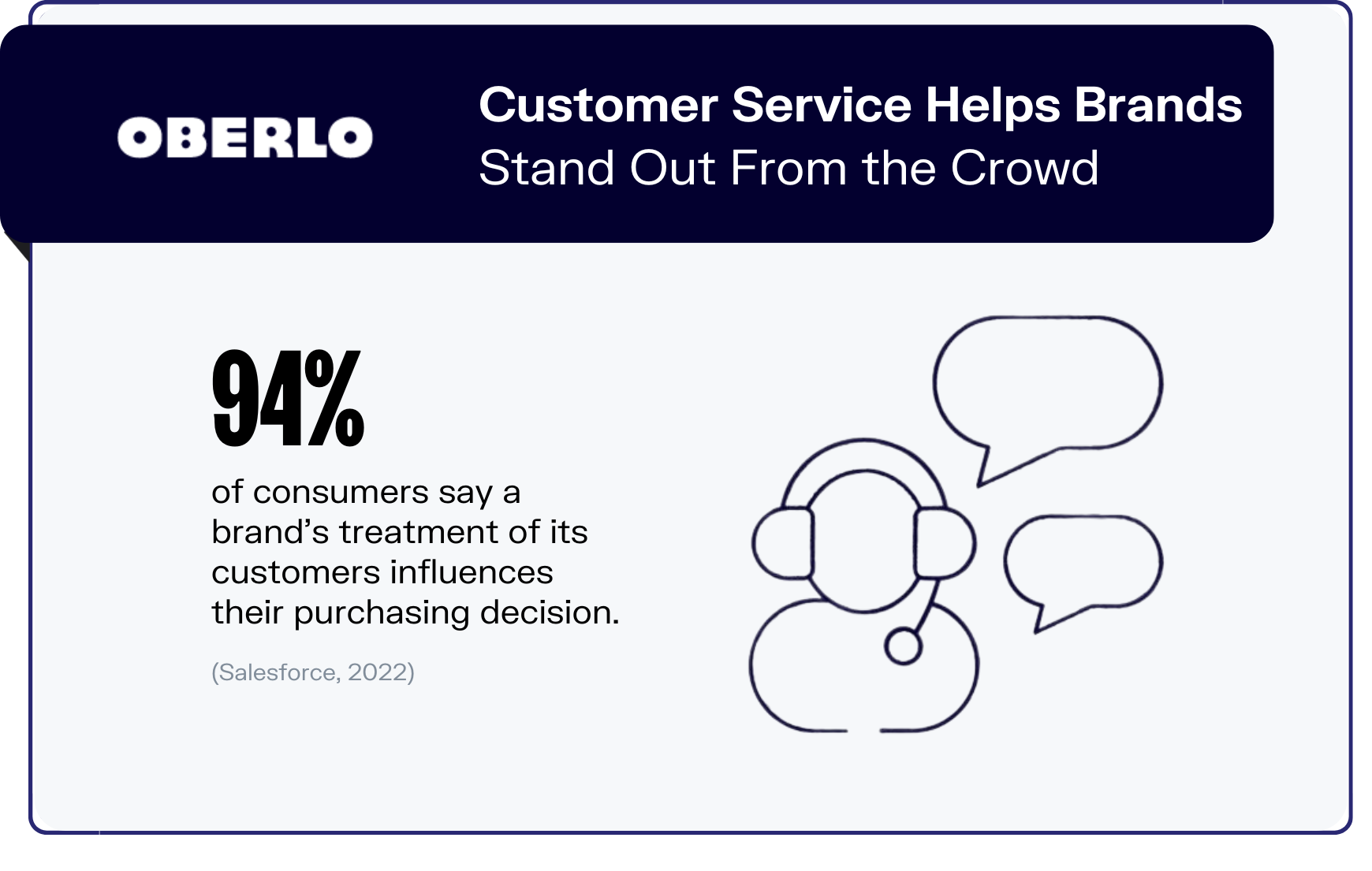The global spice market is hot, valued at over $37.26 billion in 2022, and growing steadily year after year. As consumers continue seeking out bold, exotic flavors to liven up their cooking, small-scale spice producers have a prime opportunity to tap into this demand.

Sourcing quality ingredients at fair prices, understanding legal regulations, and building brand recognition all require careful planning and expertise. Where do you even begin to strategize your foray into this market? What equipment, relationships, and permits do you need to be secured first?
This article will walk through a practical, step-by-step guide on how to start a spice business. Topics include registering an EIN, obtaining business insurance, forming a legal business entity, and more.
1. Conduct Spice Market Research
Market research is essential to formulate a spice business plan. This research helps you understand your target market, develop a marketing strategy, learn where to get the most high quality spices, avenues to sell spices online, and even which local specialty stores are your biggest competitors.

Some details you’ll learn through market research for your own spice business include:
- North America leads demand with a 36.2% market share as consumer interest in bold, global flavors surges.
- The spice category has proven recession-resistant as home cooking increases during tough economic times.
- Seasonings like chili powder, cinnamon, onion powder, Italian seasoning, taco mixes, and salad dressings drive the majority of the volume.
- While many purchase spices at the grocery store, there is growing interest in specialty, small-batch, artisanal spices.
- Savvy digital marketing and selling through online marketplaces can effectively reach millennial and Gen Z shoppers seeking out new spice experiences.
Starting a niche e-commerce spice business allows focusing your offerings while taking advantage of industry tailwinds. Specializing in areas like custom blends, salts, organic spices, or regionally-inspired seasoning mixes can differentiate your startup in this growth market.
2. Analyze the Competition
Doing a competitive analysis on spices business competitors is vital to strategically positioning your spice business in the marketplace. When assessing competitors, analyze both local spice shops and e-commerce spice brands selling online.

For local brick-and-mortar spice stores, identify direct competitors within your geographic area. Visit their stores, and review their offerings, branding, prices, and merchandising. Take notes on specialties, product selection, store vibe, staff knowledge, and any lines out the door.
This real-world experience will reveal what’s missing from your area and ideas to improve upon. Infuse your personality and spices into a shop design that locals will crave.
Evaluating e-commerce competitors is more scalable as you can benchmark hundreds of spice sites without geographic limitations. Use Alexa to discover the most trafficked online spice shops. Analyze their product catalogs, branding, web design, blog content, social media, SEO, promotions, shipping costs, and more. Discover what resonates in top-rated e-commerce spice shops to apply lessons to your own.
Tools like SEMrush analyze the keyword terms competitors rank for, where their website traffic comes from, what content performs best, and who their followers are. Use these insights to outperform competitors on SEO and PPC campaigns tailored to spice buyer keywords.
3. Costs to Start a Spice Business
Getting a new seasoning business off the ground requires upfront capital and ongoing investments. From registration fees to commercial equipment to ingredient sourcing, costs add up quickly. Understanding realistic budgets allows smart allocation of resources. Let’s analyze typical startup and ongoing spice business expenses.
Startup Costs
- Registering a business entity tops most startup checklists. Filing fees to register an LLC cost $50-$500 depending on your state. This protects your assets from company debts or lawsuits.
- Creating a strong brand identity is equally crucial early on. Investing in professional logo design typically runs $300-$1500.
- Outfitting a commercial kitchen to meet food safety regulations requires significant capital expenditure. Essential stainless steel equipment like mixers, mills, dehydrators, and grinders carry price tags from $2000-$15,000 each.
- You’ll also need commercial-grade storage containers, funnels, scoops, and accessories amounting to around $3000. Ventilation, fire suppression, warewashing, and refrigeration systems add several thousand in additional kitchen setup costs.
- Whether leasing retail space or building out a home kitchen, expect to budget $10,000-30,000 in preparing facilities to safely produce spices. Don’t cut corners here or you risk contaminating products.
- Purchasing ingredients in bulk reduces per-unit costs substantially when scaling production. However, sourcing large inventory volumes will require $5000+ in upfront ingredient capital expenditure.
- Other miscellaneous startup costs add up like insurance policies, merchant services, accounting software, office equipment, legal fees, permits, and licenses. Budget $5000 to cover these initial business operation expenses.
In total, expect around $50,000-$100,000 in startup capital to launch your own seasonings business.
Ongoing Costs
- Raw ingredients make up your biggest ongoing production costs. Budget ingredient outlay is between $1000-$5000 monthly depending on production volumes and exotic ingredient sourcing.
- Packaging and labeling supplies are another considerable monthly materials cost. Glass bottles, shaker tops, stickers, bags, and boxes add roughly $500-$2000 to monthly budgets.
- Depending on size and sales volumes, 1-3 full-time employees will handle tasks like production, packaging, marketing, order fulfillment, and customer service. Industry average annual spice shop employee salaries range from $35,000-$50,000.
4. Form a Legal Business Entity
Structuring your spice business as a formal legal entity establishes critical liability protections as you scale. Weighing the pros and cons of each format allows for strategic incorporation based on your goals. The four main options—sole proprietorship, partnership, limited liability company (LLC), and corporation—have different implications for spice entrepreneurs.
Sole Proprietorship
Simplicity attracts many founders to initially run their spice shop as a sole proprietorship. You gain complete control and avoid corporate taxes. However, your personal and business assets are the same. If your company gets sued or racks up debt, collectors can seize your house, car, or bank accounts to recover losses.
Partnership
Forming a general partnership lessens individual liability slightly by distributing it across multiple owners. However, each partner can still be held personally responsible for the business’s entire obligations. One partner’s negligence could bankrupt everyone. Partnership disputes over control issues commonly dissolve these entities. Rarely an ideal choice despite easier formation.
Limited Liability Company (LLC)
For small spice businesses, forming an LLC offers the best liability protections without excessive corporate paperwork. LLC owners benefit from limited personal liability meaning your assets remain untouchable from company debts or legal issues. Tax flexibility lets LLC income pass through to your returns, avoiding double taxation. Most banks and lenders prefer lending to LLCs over sole proprietors.
Corporation
Establishing a corporation equates to creating a legal entity entirely separate from its owners. This fully shields personal assets from corporate liabilities. Corporations come with more complex regulations, corporate taxes, and higher formation costs. The extra administration often proves unnecessary overhead for small spice shops.
5. Register Your Business For Taxes
Even home-based sole proprietors must register for critical tax IDs to legally operate. Top priorities include obtaining an employer identification number (EIN) and a sales tax permit.
An EIN essentially functions as your business’s social security number used exclusively for tax purposes. Free to obtain, EINs uniquely identify your company’s tax obligations separately from your returns. Spice businesses require an EIN to open business bank accounts, apply for licenses/permits, hire employees, and file quarterly taxes.
The IRS makes getting an EIN quick and easy through their online application. Simply navigate to irs.gov, search “apply for an EIN”, and select the first option to access the dedicated EIN Assistant page. This online form only takes a few minutes asking basic information about your business structure, ownership, and contact details.
With your EIN secured, check your state’s requirements to legally facilitate sales transactions. Most states mandate securing a sales tax permit (or seller’s permit) that designates you to collect and remit local sales taxes. Permit fees range from $10-$50 with the application requiring your EIN and business address. Once approved, you will receive a sales tax ID number.
Displaying your tax IDs clearly on invoices and sales receipts provides needed transparency to customers on charges. Integrating permits into your point-of-sale system also allows automatically calculating localized tax rates at checkout for accuracy.
6. Setup Your Accounting
Proper accounting prevents profit leakage and safeguards your spice company from costly IRS penalties. Investing in rock-solid recordkeeping and financial processes early on sets your business up for scalable success.
Accounting Software
Start tracking finances digitally using small business accounting software like QuickBooks. The user-friendly platform connects to your business bank/credit card accounts, syncing income, expenses, sales tax, and payments automatically into reports. This automation eliminates manual data entry and ensures real-time accuracy on financial standing.
Hire an Accountant
Throughout the year, an accountant provides indispensable guidance on profit-maximizing decisions. For a spice business, they assess aspects like pricing strategies, cost controls, inventory needs based on demand forecasting, and growth opportunities like private label production. Expect to invest around $2000-$5000 for full-scope accounting and advisory assistance.
Open a Business Bank Account
Operating finances exclusively through dedicated business accounts and credit also simplifies documentation. Open a free small business checking account to transparently track sales and expenses separate from personal transactions.
Apply for a Business Credit Card
Applying for a small business credit card also burdens your company not your credit score with repayment obligations. Eligibility typically requires good personal credit along with your EIN and annual revenue documentation. Initial credit limits often reflect 20% of reported income.
7. Obtain Licenses and Permits
While eager to launch your spice venture, don’t overlook critical licensing ensuring legitimate business practices that align with regulations. Find federal license information through the U.S. Small Business Administration. The SBA also offers a local search tool for state and city requirements.
Local municipalities require obtaining a general business license permitting you to commercially operate within city limits. Fees run $50-$500 obtained through the city clerk’s office by submitting your business structure documents. Keep this permit current through annual renewals.
Facilities producing and selling edible products must pass health inspections confirming sanitary, safe commercial equipment and food storage conditions. Schedule an inspector to walk through your processing kitchen and shop once outfitted. Passing scores on cleanliness, proper tools, temperature controls, health and safety signage, pest deterrents, ventilation, and more legally certified opening doors. Expect occasional random inspections after opening too.
Spice makers specifically should obtain a domestic food production license for manufacturing and packaging processes. These regulate proper labeling, quality control protocols, hygienic standards, and record-keeping audit trails across supply chains. State departments of agriculture oversee these particular permits ranging from $100-$1000 depending on size.
Selling scales used to measure bulk dry ingredients for customers must undergo routine calibration and inspection per weights and measurement accuracy laws. Digital scales require less frequent inspections but still need certification only $20-50 to schedule. This consumer protection step verifies fair transactions.
Importing products warrants additional scrutiny. Registering your business with Customs helps navigate international shipping regulations when sourcing exotic spices from abroad. This reduces delays during future imports clearing customs faster.
While mundane, crossing these t’s and dotting i’s makes seamlessly operating lawful. It also shows customers you take best practices seriously, building trust. Skirting legalities risks hefty fines or shutdowns derailing your honed brand. Protect against worst-case scenarios with proper preparatory permits. Reach out for licensing support if overwhelmed initially.
8. Get Business Insurance
Unforeseen disasters from equipment failure to ingredient contamination could financially sink your spice business without adequate insurance coverage. Protecting against worst-case scenarios makes securing policies well worth premium costs.
Imagine a major kitchen fire destroys your commercial facility and all inventory. Or a once-in-a-century flood washes away irreplaceable equipment and materials. Perhaps a stocked delivery truck gets stolen overnight. Each nightmare scenario leads to hundreds of thousands in devastation without business insurance buffers.
Even minor snafus causes friction. A single customer bottle of tainted spices hospitalizes a family and generates a lawsuit. Just one slip or fall accident on your shop’s wet floor also lands you in legal hot water. Finding yourself personally liable for huge company problem payouts causes unnecessary stress and bankruptcy risks.
Safeguard against catastrophes by lining up four essential coverage policies. Start with general liability insurance shielding from third-party bodily injury, property damage, personal injury, and advertising injury claims up to $1 million. Product liability protects when food products directly cause injury or illness.
Work with a small business insurance broker to review needs and get quotes. Provide your EIN, business valuations, operations details, and existing coverage for informed recommendations tailored to spice producers.
9. Create an Office Space
Beyond production facilities, securing office space provides an essential headquarters for conducting sales, marketing, accounting, HR, and other administrative tasks crucial for growth. Weigh options balancing productivity with cost-savings.
Coworking Space
Joining a hip coworking community like WeWork allows tapping into amenities and networks ripe for collaboration and accountability. Typical all-inclusive monthly memberships start around $300 per desk gaining 24/7 building access, utilities, internet, printing, conference rooms, kitchens, and community events.
Retail Office
Wholesale spice purveyors can maximize productivity situated inside their shop if space allows. Customers connect your brand to the artisans personally hand-mixing spices onsite. Invest in a private office nook allowing sales call and quick bookkeeping privacy beyond public retail floors. Dedicate $5,000 toward buildout costs turning unused square footage into an efficient power office.
Commercial Space
Once staff expands, leasing standalone commercial office space creates ideal efficiency. Expect leases averaging $20 per square foot in office parks or metro areas. This premium real estate allows executive team strategy sessions, hiring without space constraints, and central access for employees.
10. Source Your Equipment
Outfitting a commercial spice processing kitchen requires procuring stainless steel equipment meeting the rigors of high-volume production. Strategically acquiring durable tools maximizes startup capital while setting up efficiently.
Buying New
Purchasing brand new commercial grade mixers, dehydrators, grinders, boilers, and bottling systems from reputable dealers ensures peak performance for years ahead. Expect costs between $5,000-$15,000 per machine. While premium investments upfront, these warrantied units operate reliably at industrial capacities vital for growth.
Buying Used
Scoring good condition secondhand equipment cuts startup machinery costs by 40-60%. Scout options on restaurant auction sites like BidOnEquipment and WebstaurantStore outlet marketplaces. Both offer decent warranties and buyer protections given their reputations serving the food service industry. Budget extra for any transportation, installation, or refurbishing needs buying used.
Renting
Long-term equipment rentals give flexibility before committing to buying hardware. Acceptable for small batch artisans without needing workhorse constant-use tools. However, accumulate enough in rental fees and you may as well own equipment. Better suited renting specialty gadgetry like bottle labeling machines, steam peelers, or vacuum sealers on occasion.
Leasing
The closest option to buying without huge upfront capital, leasing sets consistent monthly payments while using needed equipment. Typically 3-5 year terms before ownership transfers or you upgrade models. These finance agreements do tack on extra administrative fees making leasing costlier than purchasing outright when able.
11. Establish Your Brand Assets
Crafting a distinctive brand identity helps your artisanal spice company stand out from commodity competitors. Investing in professional logo design, packaging, signage, and digital properties allows connecting with consumers through consistent visual recognition and experiences.
Get a Business Phone Number
Start by purchasing a memorable business phone number from a leading VoIP provider like RingCentral. Choose a local area code or toll-free 800 number for broader national reach. Expect starter digital plans for around $30 monthly including call routing, voicemail transcriptions, analytics, and more.
Design a Logo
Design a sleek, mouthwatering logo conveying your spice business ethos. Companies like Looka make the process easy offering unlimited custom concepts refined to your feedback. Expect around $300 for full rights to your polished branding.
Print Business Cards
Print premium logo stickers, hang banner signage, and order branded apparel embedding your mark prominently on-site and at markets. Vistaprint provides affordable, quality products like retractable banners for $50 and custom t-shirts under $10 each.
Get a Domain Name
Purchase a .com domain name matching your spices’ brand for $15 annually through registrars like Namecheap. This gives control over a consistent web address as your digital flagship.
Design a Website
Building out that online presence drives 24/7 sales and brand building. Utilize DIY website builders like Wix for easy drag-and-drop page creation. Opt for e-commerce functionality like integrated payments, shipping, and analytics. Or hire a freelancer from Fiverr to custom code a site from $500 delivering to your specifications.
12. Join Associations and Groups
Networking with industry peers, vendors, and specialty institutions expands expertise giving your spice brand a competitive edge. Build connections locally and online through trade organizations, meetup events, and Facebook groups.
Local Associations
Look into joining regional chapters of national associations like The American Spice Trade Association (ASTA). Membership fees under $500 gain insider access to regulations advocacy work, Virtual and in-person conferences featuring innovations in science or sustainability, and searchable member directories ripe for partnerships.
Local Meetups
Frequently mingling in person remains invaluable despite digital dominance. Use event platforms like Meetup to find regional trade fairs, food entrepreneur pitch competitions, small business mixers, farmers markets, and more. Sort by spice business keywords like “food and beverage” or “culinary creatives.”
Facebook Groups
Participating in niche trade groups on social channels generates online relationships and learnings easily from anywhere. Search for private communities like Spices Business and Spices Market for Importers and Exporters Read advice threads, join virtual discussions, or run quick polls on packaging concerns or ingredient trends.
13. How to Market a Spice Business
Implementing creative marketing expands your spice business’ reach and fuels sustainable growth. Leveraging existing contacts, digital platforms, and targeted campaigns makes strategically promoting your offerings second nature over time.
Referral Marketing
Referrals from thrilled customers provide the most valuable marketing possible. Incentivize sharing by offering 10% off their next order for any new customer mentioning their name. Word of mouth builds community curiosity ideal for testing new blends early too.
Digital Marketing
Amplify digital exposure through:
- Google Ads campaigns targeting regional foodies and home cooks to drive site traffic
- Facebook and Instagram ads spotlighting vibrant dish images using your products met with discounts
- Start a YouTube channel with quick recipe videos prominently featuring your spices
- Guest post on cooking blogs sharing unique global flavor combinations
- Optimize site content for SEO ranking higher for keywords like “artisanal spices”
- Email collect customers for regular e-newsletters on new product launches, specials, and consumer tips
- Run giveaways and contests across social media rewarding spice-specific hashtags
Traditional Marketing
Pursue creative traditional marketing avenues like:
- Secure a booth at the annual community farmer’s market to sample rubs and sprinkle blends
- Print bold display ads in local newspapers’ food sections
- See if boutique grocery stores will shelf your tins on consignment, casually spreading brand visibility
- Sponsor community event kitchens supplying custom spice blends taking over dishes
- Mail handwritten recipe cards to neighbors featuring your ingredients
- Create spice-of-the-month subscription gift boxes expanding recurring revenue
The opportunities abound to ingeniously showcase artisanal offerings both online and off. Let people passionately experience what makes your spices so special through consistent touchpoints in their purchase journey. Creative grassroots efforts post impressive returns cementing brand affinity with core fans who then recruit new followers for you through word-of-mouth magic.
14. Focus on the Customer
Delivering exceptional customer service sets thriving spice purveyors apart in competitive markets. Prioritizing each shopper interaction the same as the last forges meaningful relationships beyond just transactions. This cultivates the kind of brand loyalty that drives repeat purchases and referrals.

Start by openly sharing deep knowledge around spice origins, artisanal processing techniques, flavor profiles, and pairings personalized to their cooking needs. Nothing impresses quite like expertise. Upsell thoughtfully based on budgets and use cases rather than pushing premium products only some can afford.
Make exchanges hassle-free allowing recipe tweaks or ingredient substitutions even months later if blends simply didn’t suit their palate as expected. Share cooking tips freely like blooming spices in oil before simmering to refresh aromatics. Thoughtful guidance shows you aim for their culinary success over one-time sales.
Follow up by email after purchases checking satisfaction and encouraging questions if dishes didn’t dazzle as hoped. Perhaps humidity levels altered intensity or a missing pinch of salt dulled flavors. Identify issues collaboratively to find ideal pairings. This level of attentive troubleshooting cements loyal fans.
When customers feel genuinely cared for beyond dollars, they excitedly share that feeling within communities becoming your best brand advocates. Prioritize memorable service shining through interactions and the spice sells itself.
